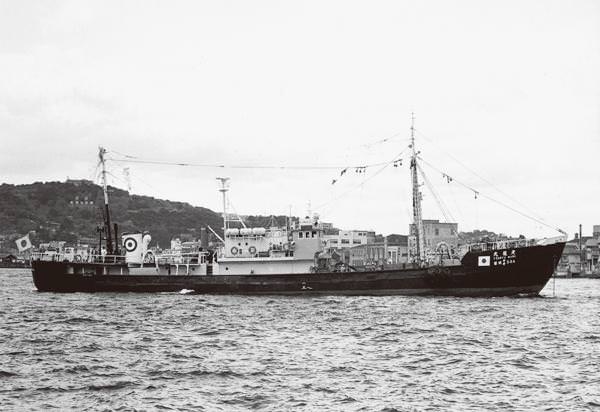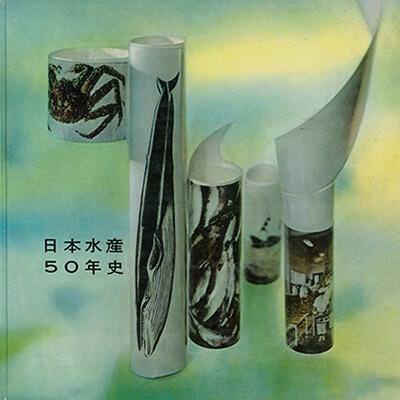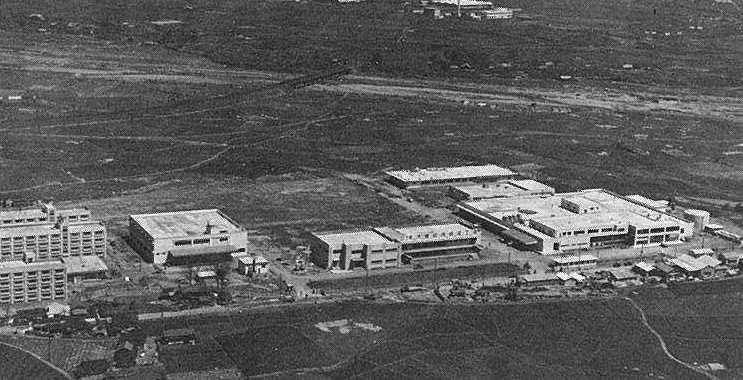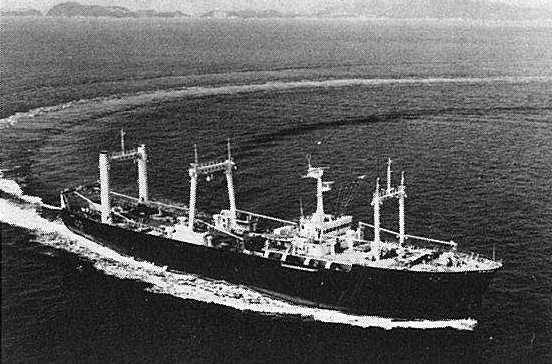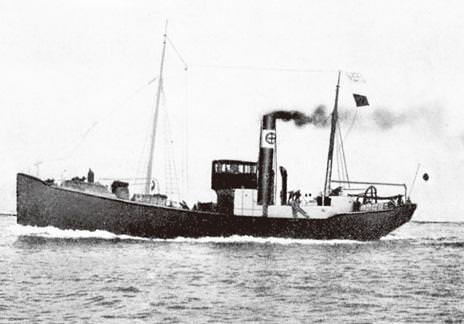History
1950-1976
Business expansion in the period of rapid growth
| Nissui Events | World Events | |
|---|---|---|
| October 1950 |
Designation as a restricted company was lifted. |
|
| March 1951 |
Sunken ship Tonan Maru III was successfully refloated. |
|
| November 1951 |
Death of Ichiro Tamura. |
|
| May 1952 |
The Tenryu Maru fleet leaves from Hakodate to begin first mother ship-type salmon/trout fishery in the postwar era. |
|
| August 1952 |
The trawler Asama Maru began fishing flounder in north-sea. |
|
| September 1952 |
A fleet centering on Miyajima Maru began flounder operations in the eastern Bering Sea with north-sea mother-ship trawl fishery. |
|
| October 1952 |
Full-scale production of fish sausage started at the Tobata Plant. |
|
| April 1955 |
Fleet, centering on crab fishery mother ship Yoko Maru, King crab harvests begin off the west coast of western Kamchatka Head office moved to Tokyo Building in Marunouchi, Chiyoda-ku. |
|
| April 1957 |
Nippon Suisan Sponsored radio broadcast of Akado Suzunosuke, and it became a sensational hit. |
|
| 1958 |
The Tobata Plant began full-scale production of frozen products. |
|
| February 1958 |
Nissan Fishery Institute changed its name to Nissan Research Institute Co., Ltd. |
|
| June 1958 |
Fishmeal fleets began operations in the Bering Sea. |
|
| July 1958 |
Trawler Uji Maru dispatched to Africa. |
|
| 1959 |
Began joint research regarding surimi with the Hokkaido Fisheries Experimental Station. Began production of the first frozen food product for ordinary households, "Chawanmushi" egg custard, at Hakodate Teion Reizo. |
|
| April 1959 |
The Five-Year Reformation Plan began. |
|
| April 1960 |
The meal factory ship Gyokuei Maru began research on offshore surimi production. |
|
| May 1960 |
The Harumi Coldstore was completed. |
|
| March 1961 |
Sale of "Nissui Delux Mayonnaise" began. |
|
| May 1961 |
A ceremony marking the 50th anniversary of the company's founding was held. "A History of Fifty Years of Nippon Suisan Kaisha.Ltd." and "Nippon Suisan Gyofu (Scientific Illustrations of Food Fish of the world" were published. |
|
| January 1962 |
Nissan Research Institute was renamed Nissui Pharmaceutical Co., Ltd. |
|
| June 1962 |
Hachioji General Plant completed. |
|
| July 1962 |
Nissui began its sale of Nissui Cheese. |
|
| November 1962 |
Ore carrier Andesu Maru was built. |
|
| 1965 |
Marketing of instant noodles "Nissui Ramen" began. |
|
| April 1966 |
Head office moved to Nippon Building in Chiyoda-ku, Tokyo. |
|
| February 1967 |
Surimi equipment was installed on the refrigerated factory ship Shikishima Maru which set sail as a mother ship-type trawl fishery in the Bering Sea. Gyokuei Maru also began full-scale production of frozen surimi. |
|
| 1967 |
Frozen food product "Chibikko Korokke" became a big hit. |
|
| June 1967 |
The Central Research Laboratory was relocated from Suginami-ku to Hachioji in Tokyo. Frozen food product "Chibikko Korokke" became a big hit. |
|
| November 1968 |
Sales of "Yaki-Chikuwa" began. |
|
| February 1970 |
Mineshima Maru went into operation as a mother ship-type trawl fishery in the Bering Sea. The surimi fleet was comprised of three ships, the Mineshima Maru, Shikishima Maru, and Gyokuei Maru. |
|
| July 1970 |
Started use of Alaska pollock surimi as the ingredient of fish sausages and ham. |
|
| 1970 |
Began sales of "Fleuret," mayonnaise in an upside-down container. |
|
| October 1970 |
Yamato Maru (a 5,000-ton stern trawler, the world's largest) was completed. |
|
| April 1972 |
Sales of Akado Suzunosuke sausages began. |
|
| February 1973 |
Manufacturing of frozen food products was relocated from the Harumi Plant to the Hachioji General Plant. |
|
| September 1973 |
Production of fish sausages that did not contain acrylic furylfuramide (AF2) began. |
|
| 1973 |
Yoko Maru left for the final mother-ship type king crab expedition off the west coast of Kamchatka. |
|
| March 1974 |
Nippon Suisan (U.S.A.) was established in the United States. |
|
| May 1974 |
Unisea founded in the U.S. |
|
| October 1975 |
The Tonan Maru II fleet made its last Antarctic whaling expedition. |
|
| December 1975 |
It was decided that mother ship-type whaling operations would be transferred to Nippon Kyodo Hogei K.K. |
|
| June 1976 |
Mother ship-type vessel Tonan Maru II and seven whaling vessels as well as crewmen were transferred to Nippon Kyodo Hogei. |
|
